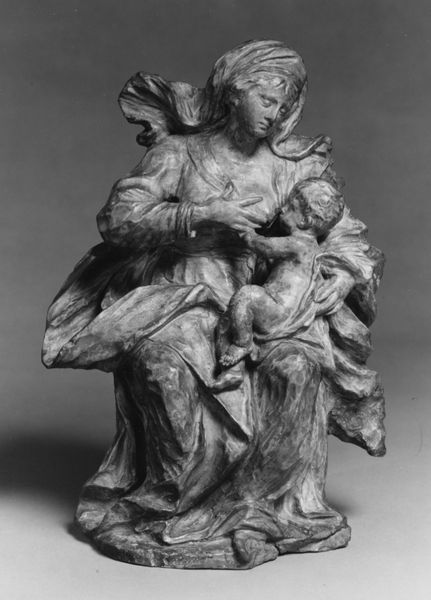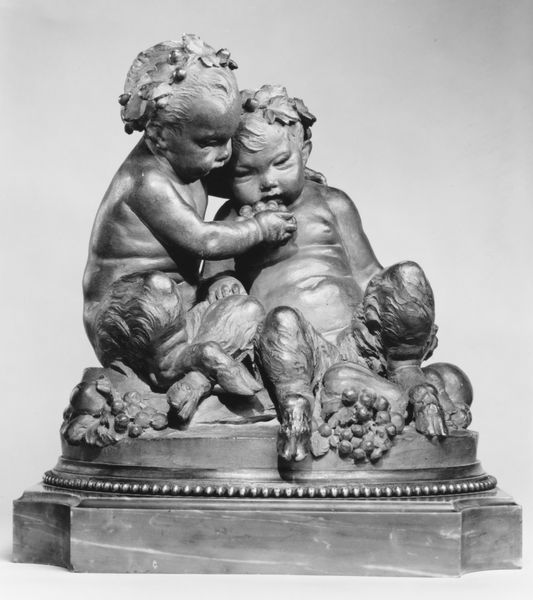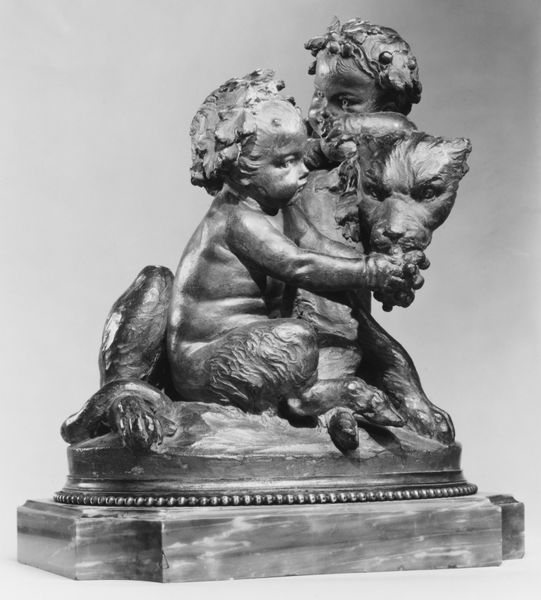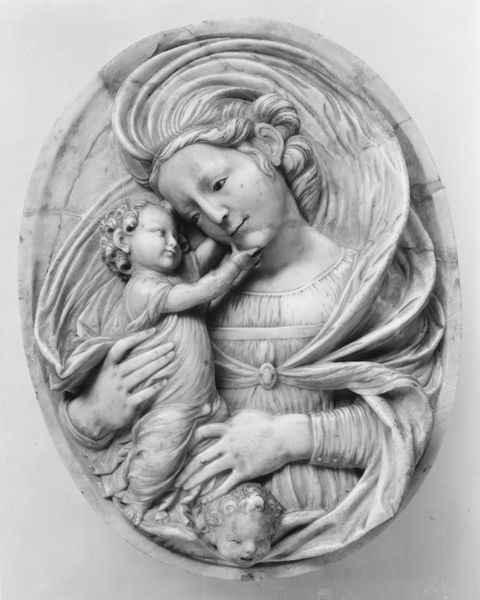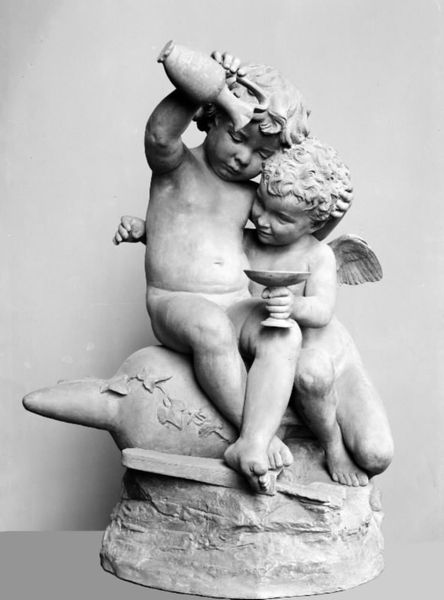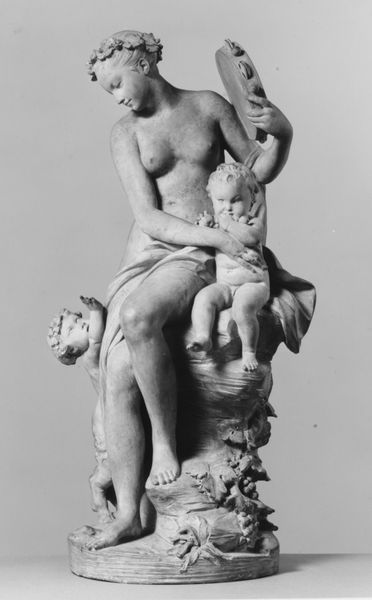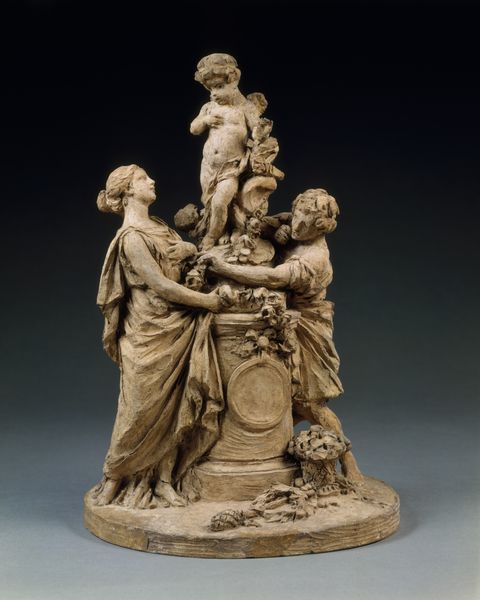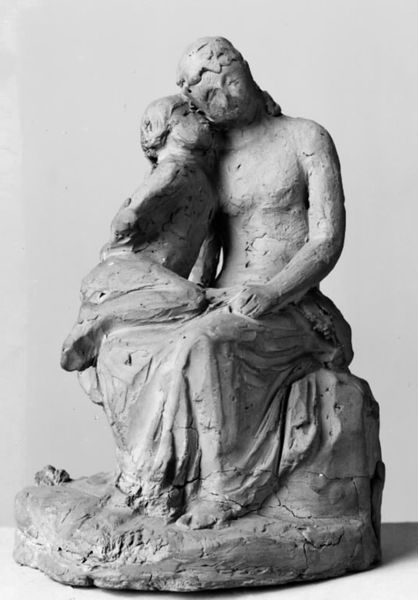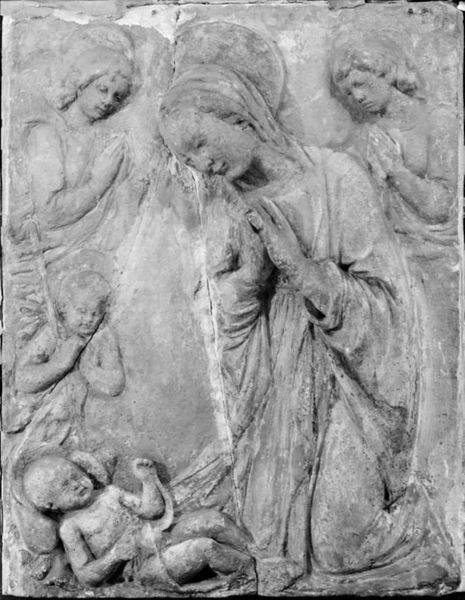
sculpture, plaster
#
sculpture
#
figuration
#
sculpture
#
plaster
#
decorative-art
#
rococo
Dimensions: Overall: 15 7/8 × 14 1/2 × 6 in. (40.3 × 36.8 × 15.2 cm)
Copyright: Public Domain
Curator: Let's turn our attention to "Model for a Papal monument," a plaster sculpture crafted between 1735 and 1755 by Peter Anton von Verschaffelt. Editor: It’s astonishing! The dynamism of those cherubic figures contrasted with the weighty symbolism intended... It almost feels paradoxical. Curator: Paradoxes define it, really. The Rococo style, known for its playful exuberance, is evident in the swirling clouds and cherubic figures. This style presents a unique challenge when applied to a Papal monument. Rococo offers lightness, while Papal monuments traditionally symbolize permanence and authority. Editor: I’m intrigued by the plaster itself. The very transience of the material betrays the enduring legacy the monument would be meant to project. This almost ephemeral quality in material and visual aesthetic—how was this model presented to the Vatican? Was it considered too frivolous? Curator: Considering the original intent of a monumental commission, I see these playful cherubs as traditional symbols. Throughout history, the cherub has represented divine love, protection, wisdom, and they were commonly integrated into art to bridge heaven and Earth. Editor: That’s certainly a persuasive reading. It really brings home the point that understanding material is only half the story. Knowing *why* the artist made those choices and who he was making them *for* closes the circle. Still, I do find myself wondering if the lightness of the form subverts its gravity. Curator: Precisely! The lasting allure hinges on interpreting these loaded images that once commanded significant meaning, and how meaning evolved over time. These Rococo details might feel sentimental to a modern viewer, but I see the work balancing its complex religious significance. Editor: That gives me much to consider—how cultural context shifts perceptions of artistry, and how an artwork can both uphold and question tradition through materials and symbols. Thanks for shedding some light. Curator: Indeed. It’s a pleasure to think about art from an anthropological lens and unravel what lies beneath the surface of even seemingly conventional depictions.
Comments
No comments
Be the first to comment and join the conversation on the ultimate creative platform.
